Cycling is widely recognized as one of the best cardiovascular exercises, but it’s also highly effective at engaging and strengthening various muscle groups throughout the body. Whether you’re a professional cyclist or an enthusiast enjoying the fresh air, understanding how cycling impacts different muscles can help you optimize your performance and reduce injury risk.
In this blog, we will explore the primary and supporting muscles that cycling works, how different phases of the pedal stroke engage specific muscles, and exercises to improve your cycling endurance and strength.
Why Knowing Muscle Engagement is Important for Cyclists
Whether you’re cycling for fitness or competitive sport, knowing how your muscles are engaged allows you to focus on areas that may need strengthening. This can improve your efficiency, boost performance, and most importantly, prevent overuse injuries.
Some say that cycling is also a full-body exercise which is true to an extent but it is lower body focused. During cycling, you will engage your core and some upper body for stabilization on the bike.
Primary Muscles Worked in Cycling
Here are the 4 primary muscles that are being worked while cycling and how you can strengthen them to improve muscular endurance.
1 | Quadriceps (Quads)
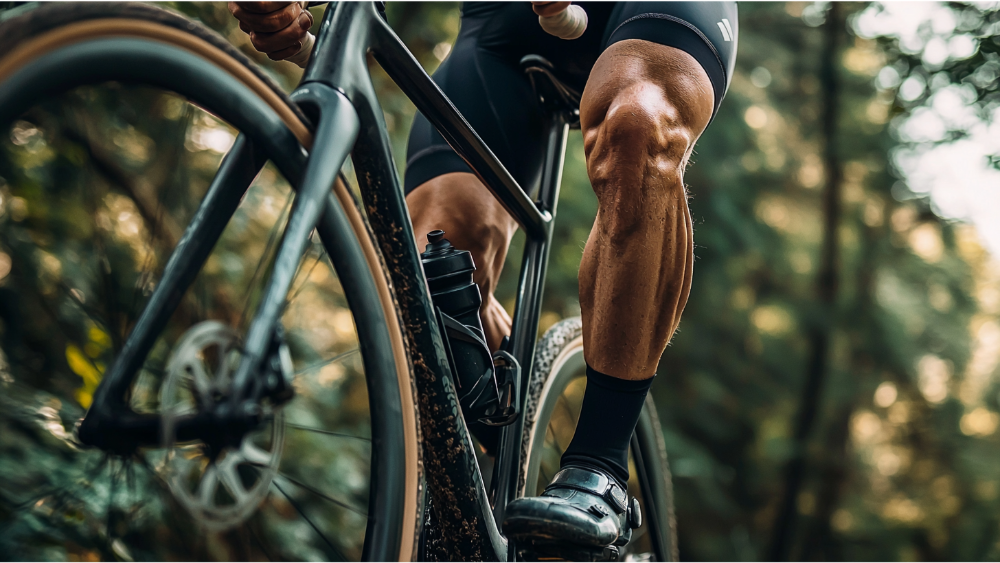
The quadriceps are one of the most critical muscle groups involved in cycling. Located at the front of your thigh, these muscles are responsible for extending your knee during the downstroke phase of pedaling.
• Role of the Quads in the Downstroke: The quads provide the bulk of the power as you push the pedal down, which makes them highly active during each pedal revolution. This engagement increases with higher-intensity efforts, such as hill climbs and sprints.
• How to Strengthen Quadriceps for Cycling: To strengthen your quads, incorporate exercises like squats and leg presses into your routine. These exercises mimic the same movement pattern you use on the bike, making them highly effective for improving power output.
2 | Hamstrings
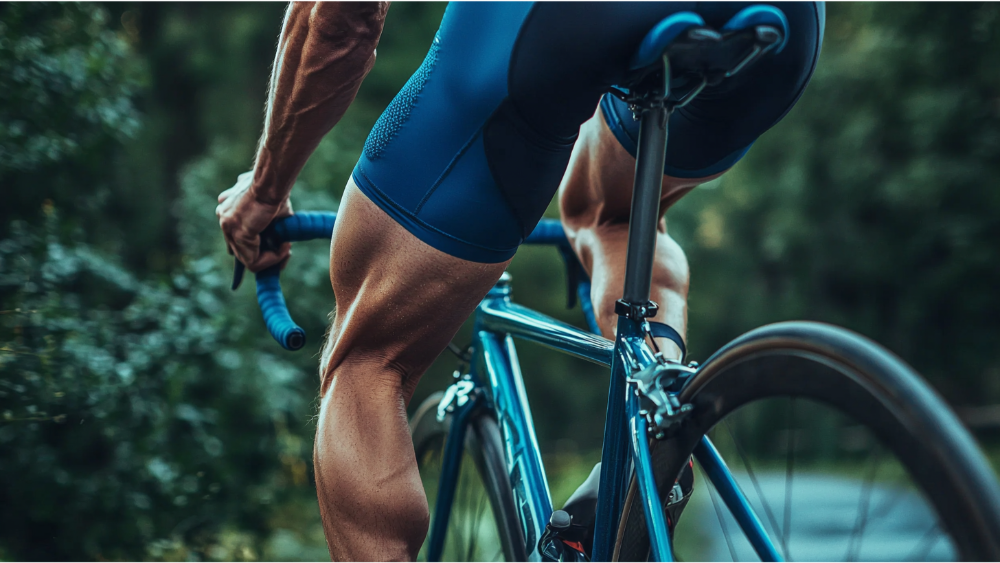
While the quads dominate the downstroke, the hamstrings take over during the upstroke. These muscles, located at the back of the thigh, are vital for pulling the pedal upward and ensuring smooth pedal rotation.
• Contribution to the Upstroke Phase: The hamstrings work in tandem with the quads to maintain efficient pedaling by flexing the knee and pulling the pedal back up.
• Hamstring Exercises for Better Cycling Performance: Strengthen your hamstrings with exercises like Romanian deadlifts and hamstring curls. These will not only improve your pedaling efficiency but also help prevent knee injuries common among cyclists.
3 | Gluteus Maximus (Glutes)
The glutes, the muscles of your buttocks, are another powerhouse in cycling. They assist the quads during the downstroke and play a significant role in stabilizing your pelvis.
• Glutes’ Role in Power Generation and Stability: The gluteus maximus is the largest muscle in the body and helps extend the hips, providing much of the force required for powerful pedal strokes.
• Exercises to Strengthen Glutes for Cycling: Incorporate lunges, glute bridges, and hip thrusts into your training. Strong glutes not only enhance your performance on the bike but also improve your posture and reduce lower back strain.
4 | Calves (Gastrocnemius and Soleus)
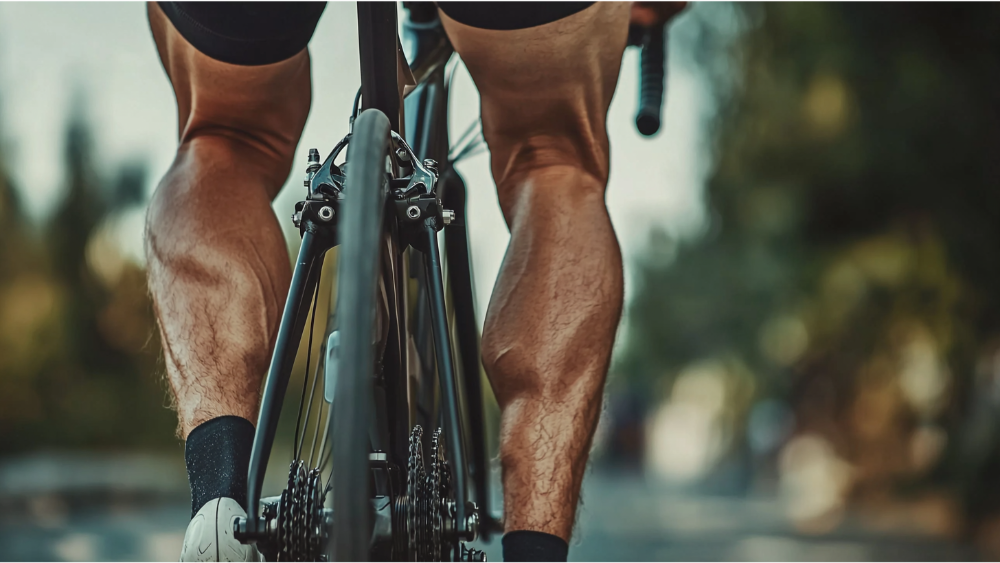
Your calves are responsible for flexing and stabilizing your ankles, which is critical for efficient pedaling. The gastrocnemius and soleus, located at the back of your lower leg, are active during both the downstroke and upstroke.
• Calves’ Function During the Pedal Stroke: The calves help push the pedal through the bottom of the stroke and pull it back up, contributing to smooth, circular motion.
• Calf Strengthening Exercises for Cyclists: Calf raises and seated calf presses are excellent ways to build strength in these muscles, helping improve both your endurance and power on the bike.
Supporting Muscles Engaged in Cycling
Core Muscles (Abdominals and Lower Back)
A strong core is essential for maintaining balance and posture while cycling. Although cycling is not typically considered a core-focused activity, the abdominals and lower back muscles are consistently engaged to support the upper body and transfer power to the legs.
• Importance of Core Stability in Cycling: Your core stabilizes your body, preventing excessive swaying and helping you maintain an aerodynamic position during long rides or high-intensity efforts.
• Core Exercises to Enhance Cycling Endurance: Incorporate planks, Russian twists, and leg raises into your training routine. These exercises will strengthen your core and improve your cycling efficiency.
Hip Flexors
The hip flexors, located at the front of your hips, are key muscles in the upstroke phase of the pedal stroke. They help lift the leg and prepare it for the next pedal revolution.
• Role of Hip Flexors in Lifting the Pedal: Strong hip flexors allow for smoother, more powerful upstrokes, which helps maintain speed and cadence.
• How to Prevent Hip Flexor Fatigue in Long Rides: To prevent hip flexor fatigue, ensure proper bike fit and include dynamic stretching in your pre-ride routine.
Upper Body Muscles
Although the legs do the majority of the work, cycling also engages the shoulders, arms, and upper back, especially during climbs or sprints when you’re pulling on the handlebars for extra leverage.
• How the Shoulders and Arms Assist in Stabilization: Your upper body helps stabilize the bike and absorb shock from uneven terrain, especially when cycling outdoors.
• Upper Body Exercises to Support Cycling: Strengthen your upper body with push-ups, pull-ups, and shoulder presses to improve your ability to control the bike during difficult rides.
Muscle Engagement During Different Cycling Phases

Downstroke vs. Upstroke Muscle Usage
The downstroke and upstroke are the two key phases of the pedal stroke, and they engage different muscles.
• Power Phase (Downstroke): This is where most of the power is generated, primarily through the quads, glutes, and calves.
• Recovery Phase (Upstroke): The upstroke is often underutilized by beginner cyclists, but it is essential for pedaling efficiency. It relies heavily on the hamstrings and hip flexors.
How Muscle Engagement Changes with Cycling Intensity
As your cycling intensity increases, so does the engagement of your muscles. Whether you’re sprinting or climbing a hill, your body recruits different muscles to meet the demands of the ride.
• Muscle Activation During Sprints: Sprints engage nearly all the muscles in your body, especially the quads, glutes, hamstrings, and calves, while the upper body provides stability and power.
• Muscle Engagement During Uphill Cycling: Uphill cycling requires more force from the quads and glutes, while the core and upper body assist in maintaining balance and control.
Comparing Cycling to Other Forms of Exercise
Cycling vs. Running: Which Muscles Are More Engaged?
Both cycling and running work the lower body, but the muscle engagement differs due to the nature of the movements.
• Muscle Endurance in Cycling vs. Running: Cycling generally builds greater endurance in the quads, hamstrings, and glutes, while running engages the core and upper body to a higher degree.
• Strength Development in Both Activities: Running tends to create more muscular strain due to its weight-bearing nature, while cycling is easier on the joints but still strengthens muscles effectively over time.
Stationary Cycling vs. Outdoor Cycling
Stationary cycling offers similar muscle engagement to outdoor cycling, but there are key differences.
• How Muscle Activation Differs Indoors and Outdoors: Outdoor cycling engages more stabilizing muscles, such as the core and upper body, because you must balance on the bike and navigate various terrains. Indoor cycling isolates the lower body more effectively.
• Benefits of Combining Both for Maximum Muscle Engagement: Combining indoor and outdoor cycling helps ensure all muscle groups are strengthened, making you a more well-rounded cyclist.
Strength Training and Stretching for Cyclists
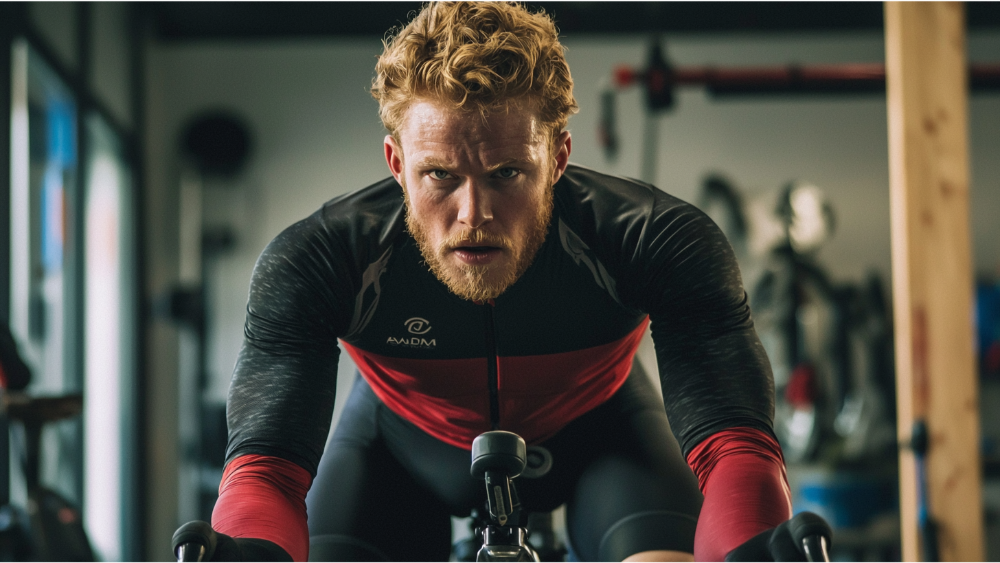
Importance of Strength Training for Cyclists
Strength training is vital for cyclists who want to improve their power, endurance, and injury prevention.
• Key Strength Exercises for Cycling Muscles: Focus on squats, lunges, deadlifts, and core exercises to build overall muscle strength and endurance.
• How Strength Training Improves Cycling Performance: A strong body translates to more powerful pedal strokes and greater efficiency on the bike, especially during intense efforts.
Stretching and Recovery for Cyclists
Stretching is often overlooked, but it is essential for recovery and injury prevention in cycling.
• The Role of Dynamic Warm-ups and Cool-downs: Before cycling, engage in dynamic stretches such as leg swings and lunges to warm up your muscles. After your ride, focus on static stretching to increase flexibility and aid recovery.
• Best Stretching Techniques to Prevent Injury: Stretch your quads, hamstrings, calves, and lower back to prevent tightness and muscle strain.
Common Cycling Injuries and How to Prevent Them
Overuse Injuries in Cyclists
Cycling can sometimes lead to overuse injuries, particularly in the knees, lower back, and hips.
• Knee Injuries Due to Improper Muscle Balance: Strengthening the quads and hamstrings equally helps prevent knee pain from overuse.
• Lower Back Strain from Weak Core Engagement
Cyclists often experience lower back pain, especially during long rides. Strengthening the core and ensuring proper bike fit can significantly reduce strain on the lower back.
Injury Prevention Through Proper Muscle Conditioning
A well-rounded approach to muscle conditioning and strength training can help cyclists avoid injury and improve performance.
• The Importance of Cross-Training: Incorporating other forms of exercise, like running or swimming, into your routine can help strengthen underused muscles and prevent muscle imbalances.
• Strategies for Avoiding Muscle Imbalances: Pay close attention to muscle groups that are underdeveloped or strained during rides and work on strengthening them through targeted exercises.
Conclusion

In summary, cycling works a variety of muscles, with the quadriceps, hamstrings, glutes, and calves being the primary powerhouses. Supporting muscles such as the core, hip flexors, and upper body muscles also play a crucial role in balance and stability. Understanding the engagement of these muscle groups can help you optimize your performance, prevent injury, and improve endurance.
By incorporating strength training and proper stretching techniques into your routine, you can maximize the benefits of cycling and ensure long-term success on the bike.
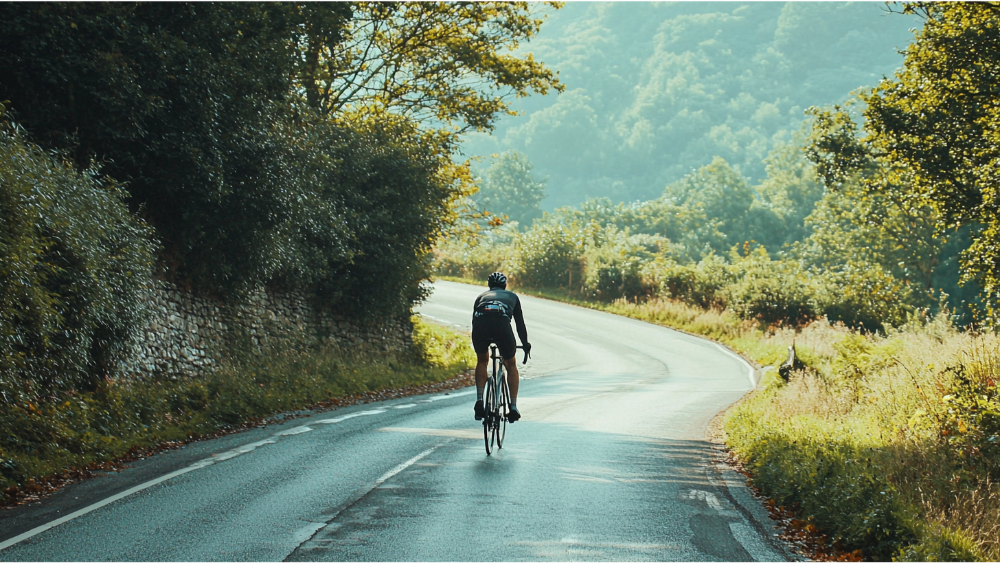
Leave a Reply